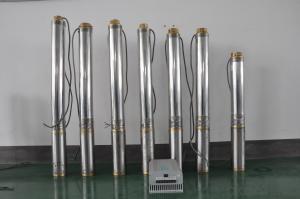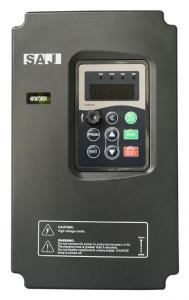Borehole solar water pump
- Loading Port:
- Shanghai
- Payment Terms:
- TT OR LC
- Min Order Qty:
- -
- Supply Capability:
- 300 set/month
OKorder Service Pledge
Quality Product, Order Online Tracking, Timely Delivery
OKorder Financial Service
Credit Rating, Credit Services, Credit Purchasing
You Might Also Like
how is the rotor made:
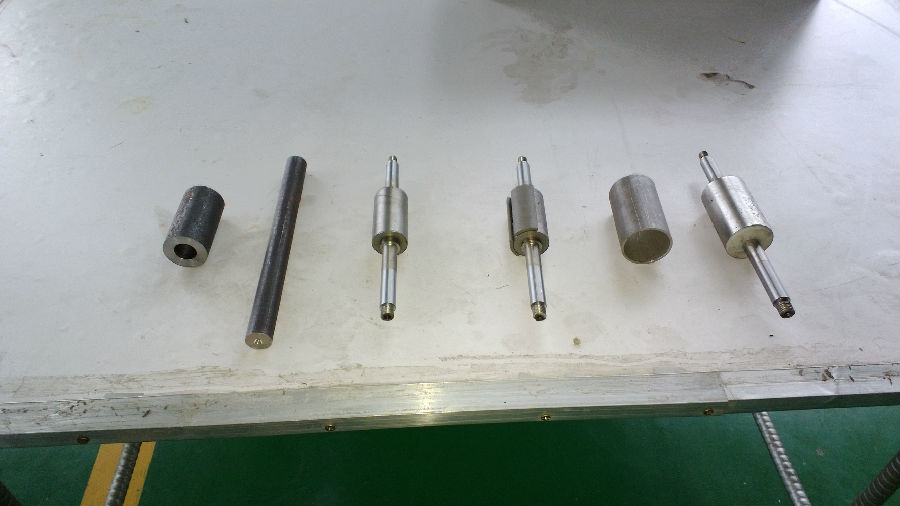
how is the motor made:
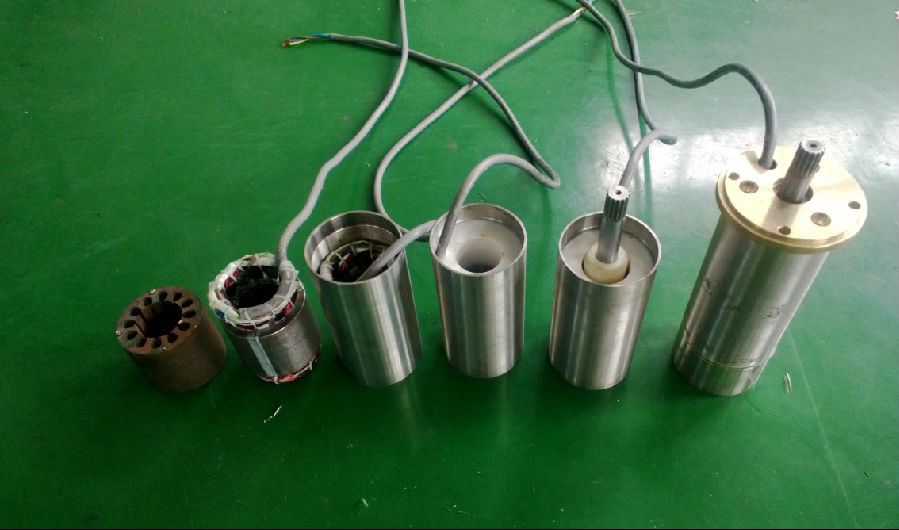
the pump :
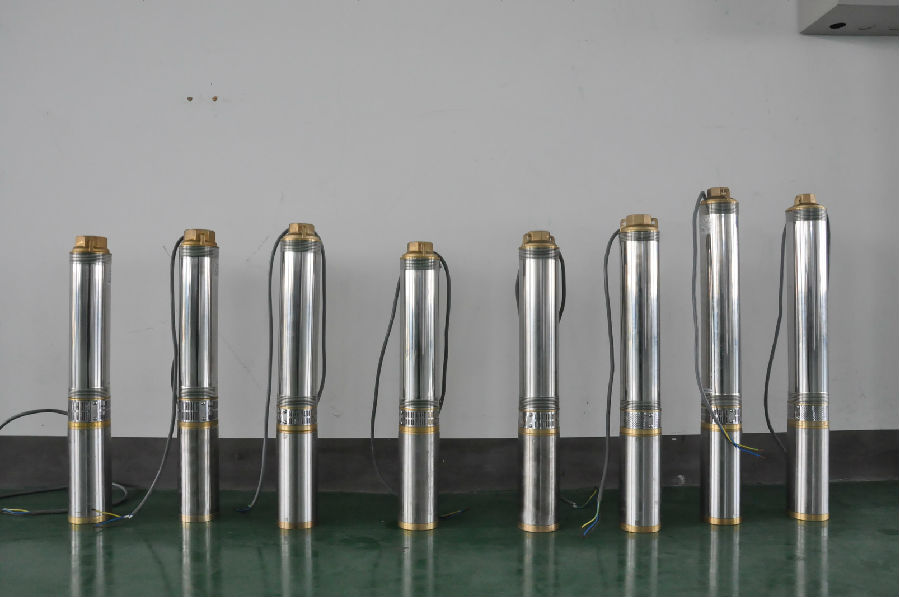
controller terminal connection:
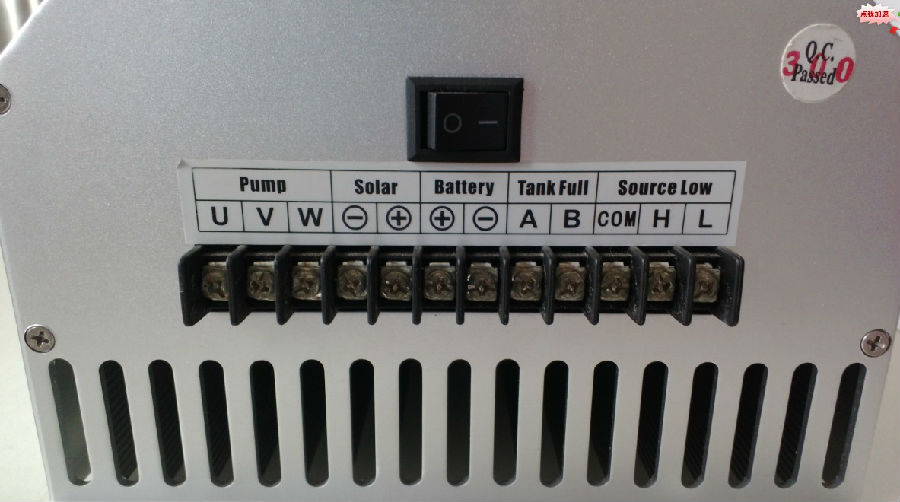
The permanent magnet:

the impeller:

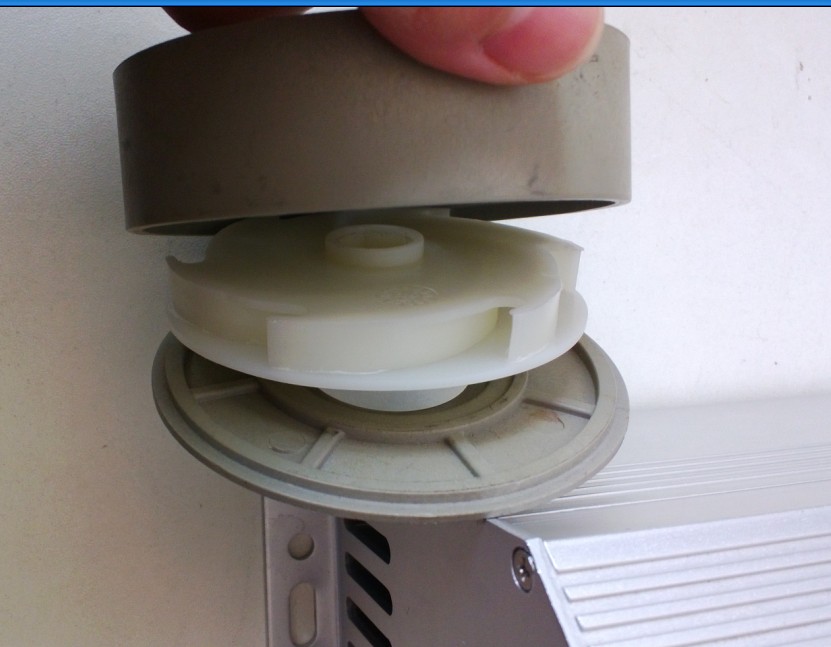
controller box:
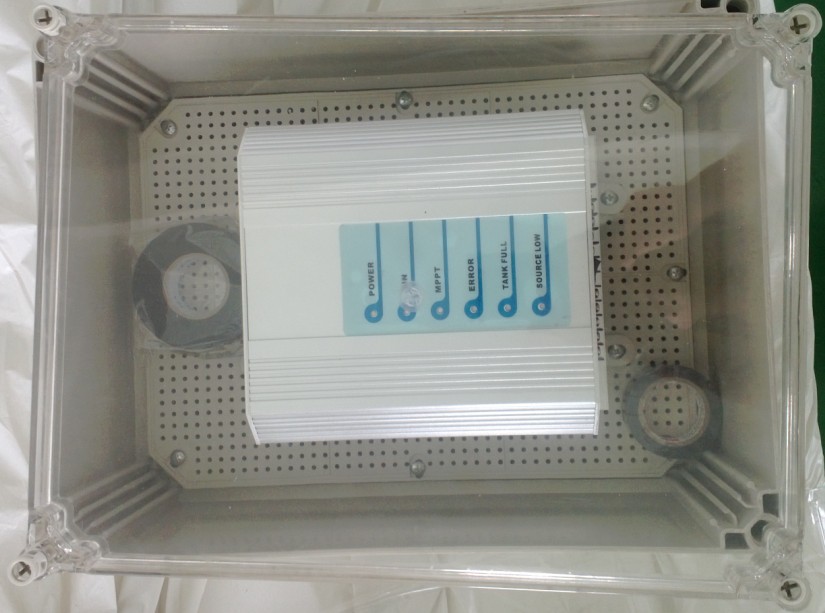
the senors:
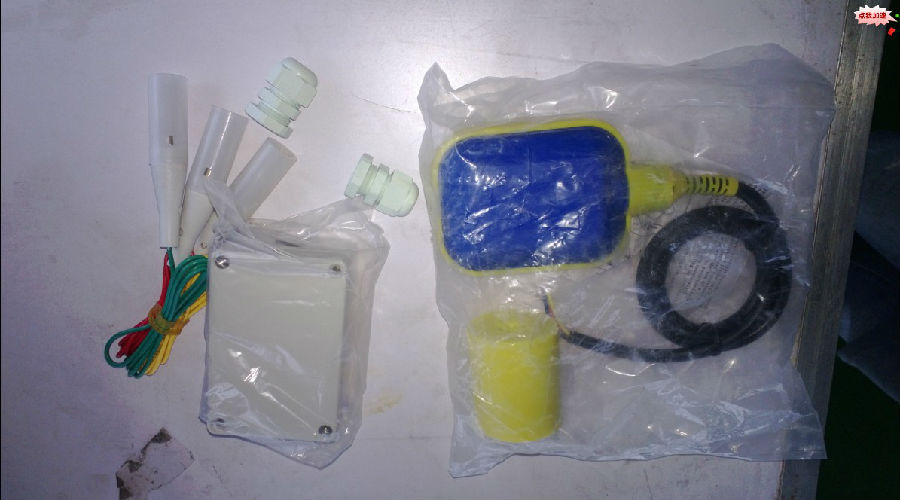
the test:
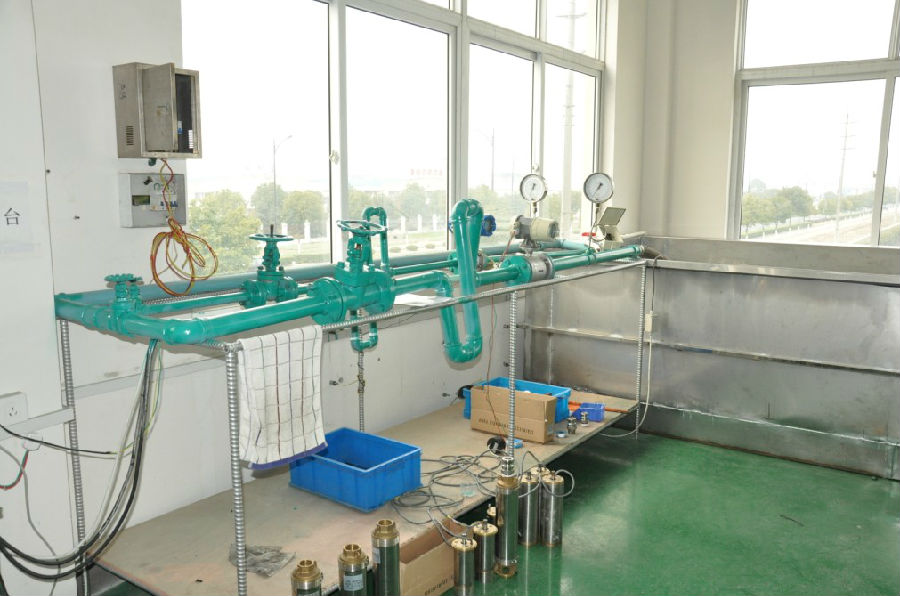
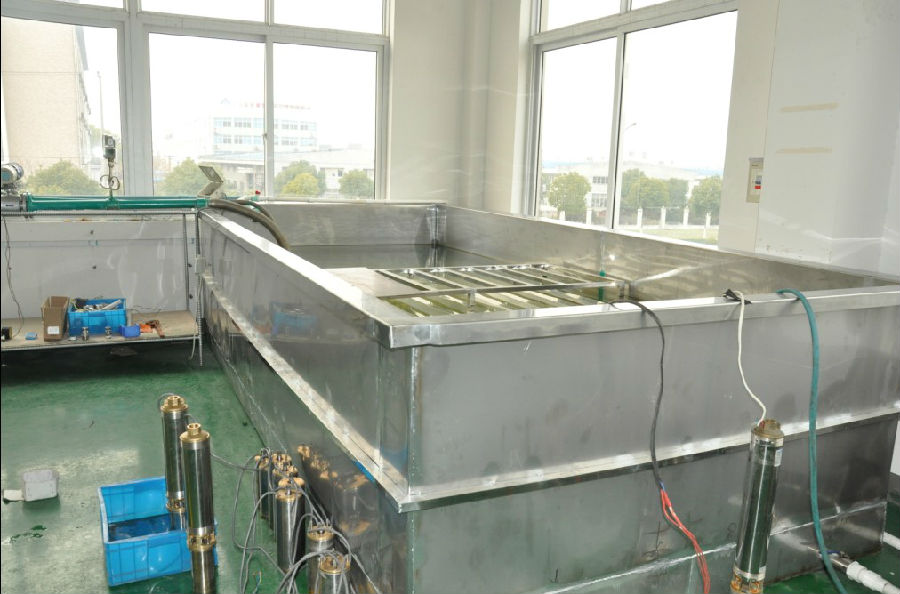
the application:
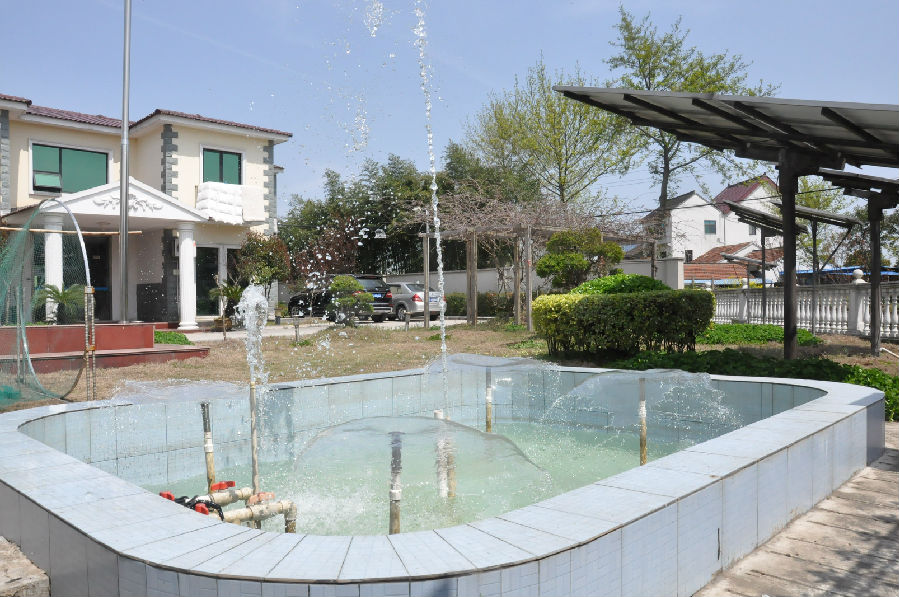
the package:
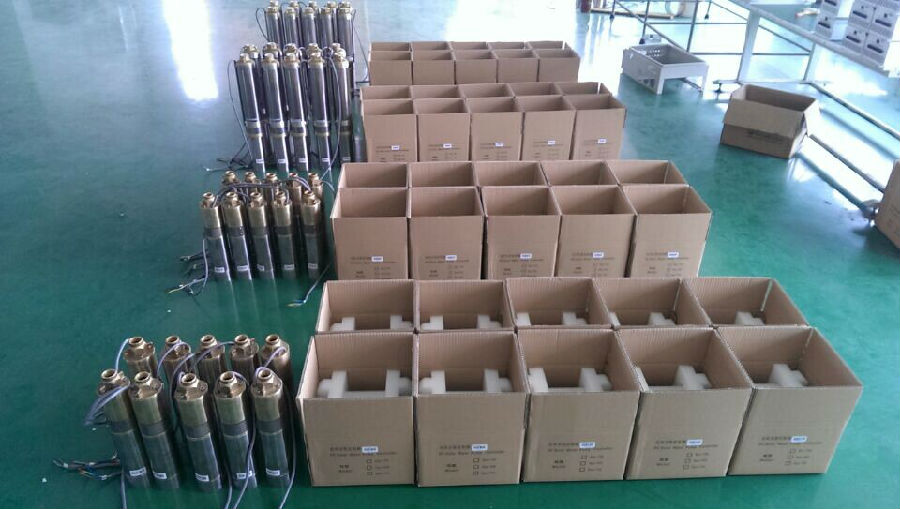
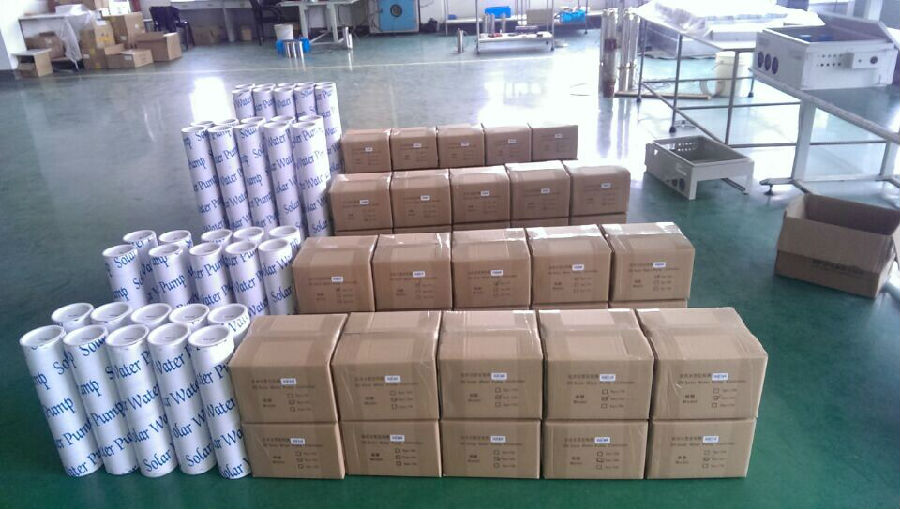

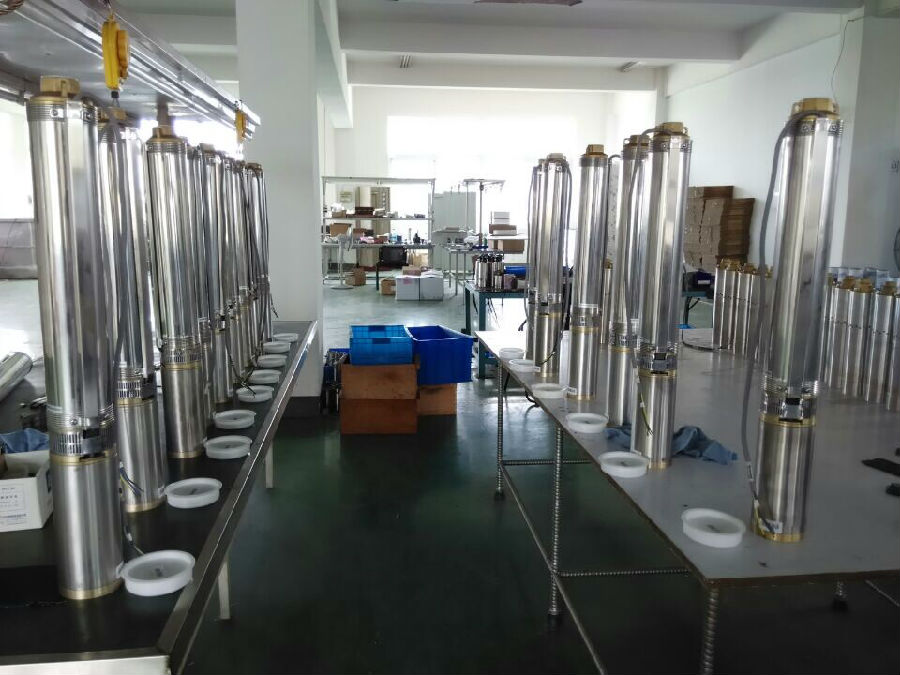

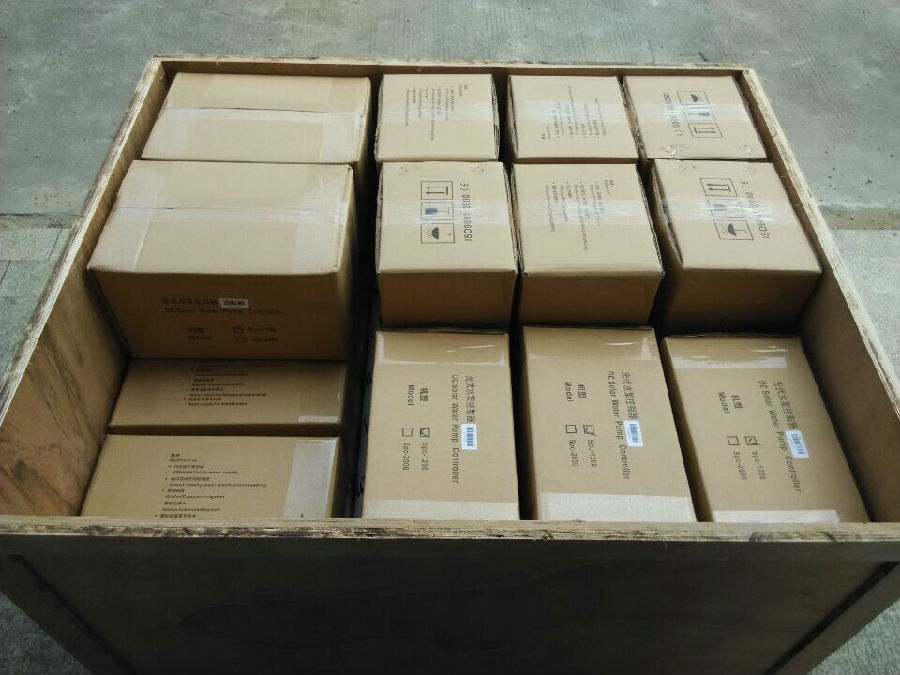
- Q:Can a solar pump be used for water supply in mining or construction sites?
- Yes, a solar pump can be used for water supply in mining or construction sites. Solar pumps are ideal for these applications as they can provide a reliable and sustainable water source without the need for electricity or fuel. They can operate remotely in areas with limited access to power grids and are capable of pumping water from deep wells or rivers to meet the water demands of mining or construction activities. Additionally, solar pumps are cost-effective and have low maintenance requirements, making them a practical choice for these sites.
- Q:Can a solar pump be used for industrial purposes?
- Yes, a solar pump can be used for industrial purposes. Solar pumps are increasingly being used in various industrial applications such as agriculture, manufacturing, mining, and water treatment. These pumps are powered by solar energy, which makes them environmentally friendly and cost-effective in the long run. Solar pumps are capable of delivering high flow rates and pressures, making them suitable for industrial operations that require water supply, irrigation, or fluid transfer. They can be used for pumping water from wells, rivers, lakes, or reservoirs, and can also be integrated into existing water systems or networks. One of the key advantages of using a solar pump for industrial purposes is the potential for significant cost savings. Solar energy is a renewable resource, and once the initial installation costs are covered, the ongoing operational expenses are minimal. This makes solar pumps a reliable and cost-effective solution, particularly in remote or off-grid locations where traditional electricity supply may not be available or affordable. Furthermore, solar pumps are often equipped with advanced technologies and monitoring systems that optimize their performance and ensure efficient water management. These pumps can be automated, allowing for remote control and monitoring, which is especially useful in industrial settings where continuous operation and precise water supply are crucial. In summary, a solar pump can indeed be used for industrial purposes. Its ability to harness solar energy, cost-effectiveness, and reliability make it a sustainable and viable option for industrial operations that require water supply, irrigation, or fluid transfer.
- Q:How do solar pumps handle fluctuations in water demand?
- Solar pumps handle fluctuations in water demand by adjusting the speed of the pump to match the required flow rate. This is achieved through a variable speed drive or controller that regulates the energy input from the solar panels. When there is high demand, the pump runs at a higher speed to deliver more water, and when demand decreases, the pump slows down to conserve energy. This flexibility allows solar pumps to efficiently adapt to varying water requirements while maximizing the utilization of solar energy.
- Q:How does the size of the water tank affect the performance of a solar pump?
- The size of the water tank can have a significant impact on the performance of a solar pump. A larger water tank allows for a greater water storage capacity, which means the pump can operate for longer periods without running out of water. This is particularly beneficial in areas with unreliable or limited water sources. Additionally, a larger water tank helps in maintaining a consistent water pressure. When the tank is smaller, the pump may need to work harder and cycle on and off more frequently to maintain the desired water pressure. This can lead to increased wear and tear on the pump and reduce its overall efficiency. Furthermore, the size of the water tank also affects the rate of water flow. A larger tank can provide a more steady and continuous flow of water, while a smaller tank may result in intermittent or inconsistent water supply. It is important to note that the size of the water tank should be chosen based on the specific needs and requirements of the system. Factors such as the amount of water required, the frequency of water usage, and the availability of sunlight should be taken into consideration when determining the appropriate size of the water tank.
- Q:What is the maximum pumping depth of a solar pump?
- The maximum pumping depth of a solar pump can vary depending on factors such as the power of the solar panels, the efficiency of the pump, and the type of well or water source. However, on average, solar pumps are capable of pumping water from depths ranging between 100 and 600 feet.
- Q:What are the safety measures to be taken while installing a solar pump?
- When installing a solar pump, it is important to take several safety measures. Firstly, ensure that all electrical connections are properly insulated and protected from moisture, as water can pose a serious risk of electrocution. Additionally, follow the manufacturer's instructions and guidelines for installation to ensure proper grounding and wiring. It is crucial to work with a licensed electrician or a trained professional to handle the electrical components of the installation. Lastly, always wear appropriate personal protective equipment (PPE) such as gloves and safety glasses to protect yourself from any potential hazards during the installation process.
- Q:What is the role of batteries in a solar pump system?
- The role of batteries in a solar pump system is to store the excess energy generated by the solar panels during the day and provide power to the pump during non-sunlight hours or when there is insufficient sunlight. This allows for the continuous operation of the pump, ensuring a reliable water supply even when solar energy is not available.
- Q:Can a solar pump be used in areas with limited access to local dealers or distributors?
- Yes, a solar pump can be used in areas with limited access to local dealers or distributors. Solar pumps are designed to operate independently of grid electricity and can be installed in remote areas where access to traditional power sources may be limited. These pumps use solar energy to power their operation, eliminating the need for a direct connection to power lines or a local distributor. With proper installation and maintenance, solar pumps can provide a reliable and sustainable water pumping solution in areas that lack access to traditional distribution networks.
- Q:Can a solar pump be used for filling a pond or lake?
- Yes, a solar pump can be used for filling a pond or lake. Solar pumps are designed to operate using solar energy, providing an environmentally friendly and cost-effective solution for water management. They can be used to pump water from a nearby source, such as a well or reservoir, and transfer it to the pond or lake, helping to maintain water levels and circulation.
- Q:How does the installation cost of a solar pump compare to a traditional electric pump?
- The installation cost of a solar pump generally tends to be higher compared to a traditional electric pump. This is primarily because solar pumps require additional components such as solar panels, inverters, and batteries, which can increase the overall installation cost. Additionally, the complexity of installing a solar pump may require specialized knowledge and expertise, further adding to the installation expenses. On the other hand, traditional electric pumps typically have a simpler installation process as they only require connection to the main electrical grid. The infrastructure for electric pumps is already established in most urban and rural areas, making the installation process more straightforward and cost-effective. Despite the higher installation cost, solar pumps offer several long-term benefits that can outweigh the initial expense. Solar pumps operate using renewable energy, which significantly reduces or eliminates electricity bills, making them cost-effective in the long run. Moreover, solar pumps are environmentally friendly and contribute to sustainable development by reducing carbon emissions and dependence on fossil fuels. Therefore, while the installation cost of a solar pump may be higher initially, the potential savings from reduced electricity bills and the environmental advantages make it a worthwhile investment in the long term.
1. Manufacturer Overview |
|
|---|---|
| Location | |
| Year Established | |
| Annual Output Value | |
| Main Markets | |
| Company Certifications | |
2. Manufacturer Certificates |
|
|---|---|
| a) Certification Name | |
| Range | |
| Reference | |
| Validity Period | |
3. Manufacturer Capability |
|
|---|---|
| a)Trade Capacity | |
| Nearest Port | |
| Export Percentage | |
| No.of Employees in Trade Department | |
| Language Spoken: | |
| b)Factory Information | |
| Factory Size: | |
| No. of Production Lines | |
| Contract Manufacturing | |
| Product Price Range | |
Send your message to us
Borehole solar water pump
- Loading Port:
- Shanghai
- Payment Terms:
- TT OR LC
- Min Order Qty:
- -
- Supply Capability:
- 300 set/month
OKorder Service Pledge
Quality Product, Order Online Tracking, Timely Delivery
OKorder Financial Service
Credit Rating, Credit Services, Credit Purchasing
Similar products
New products
Hot products
Hot Searches
Related keywords








